![]()
|
|
|
|
Architectural Heritage of Stoke-on-Trent
|
||
|
- newest articles at the top, oldest at the bottom - |
||
|
- Latest entry -
High Street Blues -
In the Potteries we are well acquainted with high street problems: we have
them, but multiplied by six. |
||
 |
The Family Silver...
it is clear that there is a desire from
within the Civic Centre to build a supermarket on the Spode site, but
the Spode Works is the biggest opportunity in the city right now. It
presents the opportunity for the city to turn its back on the wrecking
ball and rubble approach. |
|
 |
Friday 17th June 2011. Remember that date, because it is the day on which the foundations were potentially laid for a brighter economic future for Stoke-on-Trent and North Staffordshire. |
|
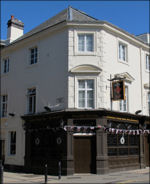 |
Good News from Glebe Street - “the dogs of doom are howling more…” but there has been some Good News, in the revamp of the Glebe Hotel by the Joule’s Brewery | |
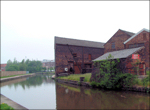 |
Waterfront
- The Middleport-Longport length of the Trent and Mersey Canal is the most historic, interesting and exciting stretch of waterside in the city. In terms of 'unique waterside heritage', Middleport-Longport has the lot. |
|
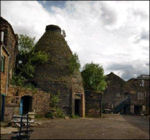 |
Will the Falcon Soar Again? - the evening's biggest disappointment for me lay just across the road, and the sad state of the former home of J. H. Weatherby and Sons, Falcon Pottery. | |
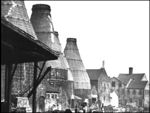 |
The Eighth Sister - Here in the Potteries, we have had mixed results when it comes to the reuse of historic buildings - the Eastwood Pottery could have gone the way of demolition - but for the eighth sister. | |
 |
The
Regeneration Game - "The grave of Bishop Bell (1883-1958) in
Christ Church Cathedral in Oxford states in letters of austere limestone:
"Without forgiveness there can be no regeneration." Stoke-on-Trent needs to reconcile itself with its past before it can renew." |
|
 |
'Victoriana' - The Potteries would not normally be viewed by scholars and experts as a ‘great’ Victorian city to rank alongside the likes of Manchester and London, but the Potteries boomed during the reign of Queen Victoria, ..... many magnificent and interesting buildings were built during the Victorian-era, and though we have lost a lot, many still remain. Indeed, Modern Stoke is primarily a product of the Victorians. | |
 |
'Symbols of
Unity, Division and the Potteries' Heart of Darkness' 31st March 2010 sees the centenary of the Federation of the Potteries’ Six Towns, .... It would be a great tribute to the event if the City Council could use the Federation’s centenary as the catalyst to kick-start the much needed regeneration of the city; I wait with bated breath. |
|
 |
'Villages of Vision' - what of the planned settlement in the Potteries? ...... there have been some developments that – at their time – have been of importance and influence locally and in some instances farther a field. | |
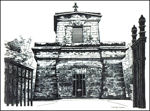 |
'Guardians of the Dead' - There is only place that we are all going; Death is the one great leveller and has no respect for money, class or status, and it is the only time of life where both kings and beggars are equal. | |
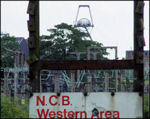 |
‘Black Gold’ This year sees the 25th anniversary of the start of the Miners’ Strike, which ultimately led to the demise of the coal mining industry as a major powerhouse in this country, the fall out of which coalfield communities are still dealing with to this day. | |
 |
"Machines for Living in" The most ubiquitous form of housing in the Potteries, is the traditional two-up, two-down terrace. Stoke-on-Trent boasts some of the finest domestic working-class architecture in the country, with some exceptional streetscapes and some principled, well-detailed housing. |
|
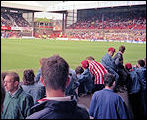 |
‘Father, Son and Football’ I sit here writing, basking in the glow of yet another Stoke City victory over the Baggies of West Bromwich, leaving Stoke sitting nicely in mid-table of the Premiership. And it isn’t even Christmas yet. |
|
 |
'Good Design is Good Business' If you asked the average man on the street what the Potteries had in common with the west coast of Wales, I’m guessing that you wouldn’t get too many answers; rather puzzled looks and shrugs of the shoulders. The answer is that unique legacy: Portmeirion. |
|
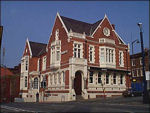 |
'Bank Statements' Economics and financial matters are things not usually associated with the wonderful world of the Potteries, but at the moment (October 2008) you cannot escape them. Banks have traditionally played roles as dominant local landmarks, symbols of wealth and power |
|
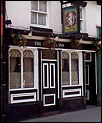 |
The end of an era? There is no single reason for the decline of the local pub, there are many contributory factors: loss and erosion of the communities that underpin the trade of the local; decline of industry and the spread of unemployment; greedy breweries and pub company landlords screwing their tenants to the point where they cannot make a living and move on; the rise of the ‘pub chain’ |
|
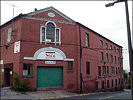 |
‘Relics’ |
|
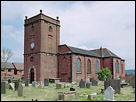 |
'The Unknown
Legends' Norton-in-the-Moors is where the city meets the moors, and has its roots in coal being home to Norton Colliery and a neighbour of Chatterley Whitfield. |
|
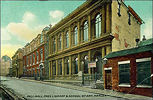 |
'Libraries gave us power' - each of Stoke-on-Trent’s six towns is blessed with its own public library, and each one is a major architectural statement. | |
|
‘The Works’ The industrial heritage of the potworks - Over the past couple of decades there has been a much greater appreciation of industrial heritage and architecture, from the huge dockland warehouses of Liverpool and the east end of London, to the famous Lancashire cotton mills. |
||
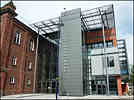 |
‘The Shock of the New (part 1)’
Victoria Hall Extension, Hanley The last real architectural statement in Stoke-on-Trent was borne out of great controversy – being a part of the infamous Cultural Quarter fiasco – and is the new extension to the Victoria Hall in Hanley. |
|
|
'Ragged Glory'
-
Church of St. John the Evangelist, Hanley
- One of the saddest
sights in the city of Stoke-on-Trent, and a monument to the apathy and
neglect of the city’s built heritage can be found on Town Road in Hanley,
and forms the gateway to our City Centre. |
||
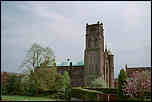 |
‘In Praise of Father Ryan’ - Church of the Sacred Heart on Queens Avenue, Tunstall. The vision of one man – Father P. J. Ryan | |
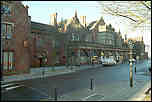 |
‘Welcome to Stoke-on-Trent’ - Stoke-on-Trent possesses one of the finest gateways in the country in Winton Square; step off the train in Stoke-on-Trent and you are met with one of the finest examples of Victorian urban planning you are likely to come across | |